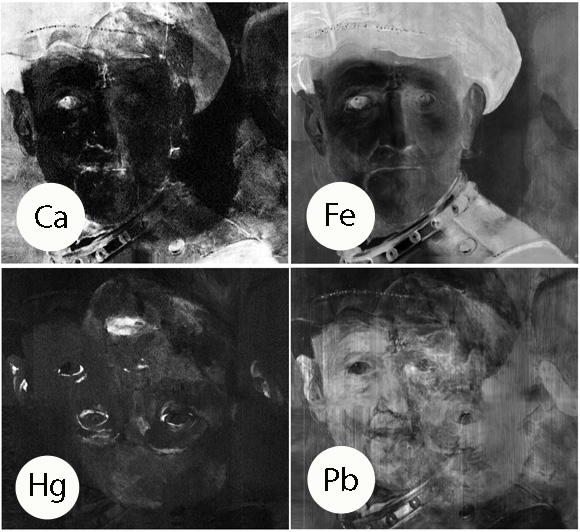A demo on a mock-up painting has demonstrated the power of an new X-ray technology. Experts think it can finally reveal a portrait hidden behind Rembrandt’s Old Man in Military Costume (from 1631).
When you want to see what painting is underneath another and more famous one, your best chance is with macro X-ray fluorescence analysis, or MA-XRF. It’s a relatively young method that’s not only available in major research centres, but for which a mobile device has also been developed. This says a recent publication of which Professor Joris Dik (3mE) is a co-author.
Now why would you want to look underneath a painting? Well, in the case of Rembrandt’s painting “An Old Man in Military Costume” it’s because earlier investigations have hinted that another portrait is on the same canvas, hidden by the top layer. And of course then you’d like to see what portrait that is, to get an idea why it has been recycled.
So, the costly painting has been subjected to infra-red beams, to neutron radiation and conventional X-ray, but to no avail. The problem was that no known technique could tease apart the two paintings. A new technique, based on X-ray fluorescence promised better perspectives.

MA-XRF uses energetic X-ray radiation which kicks metal atoms in the paint in an higher energy state. When they fall back, atoms send out specific radiation (the process is known as fluorescence) which is like a fingerprint for specific metals and therefore certain colours. Lead (Pb) for example is present in white paint and mercury (Hg) is red. By scanning the whole picture with an X-ray beam, it is possible to visualize a repainted picture.
The problem with famous paintings is the access. The Rembrandt under discussion is in the Paul Getty Museum in Los Angeles. To avoid transport and insurances of the original painting, the museum ordered intern Andrea Sartorius to produce a mock-up: an invented portrait with a replica of the old military man painted on top of it. The paint she used has the same chemical composition as used by Rembrandt. This mock-up then became available for laboratory tests.
It has been tested at DESY’s (Deutsches Elektronen-SYnchrotron) X-ray source DORIS and at the National Synchrotron Light Source (NSLS) of the Brookhaven National Laboratory in the US, as well as with a mobile scanner.
It turned out that X-ray fluorescence produced considerably better impressions of the hidden painting than all methods used before. The best results were obtained at the large facilities DESY and NSLS. Nevertheless the mobile scanner made significant progress.
Karen Trentelman of the Getty Conservation Institute said: “The successful completion of the preliminary investigations of the mock-up painting was an important first step. The results of these studies will enable us to determine the best possible approach to employ in our planned upcoming study of the Rembrandt painting.”
Professor Joris Dik, who developed the mobile scan technology, expects the MA-XRF technique to be used. “The results were promising”, he says, “and the important advantage of the mobile technology is that the painting doesn’t have to leave the museum.”
(*)‘Revealing hidden paint layers in oil paintings by means of scanning macro-XRF: a mock-up study based on Rembrandt’s ‘An old man in military costime’’, Matthias Alfeld et al.; Journal of Analytical Atomic Spectrometry (JAAS 2013, 28, 40-51) of the British Royal Society of Chemistry; DOI: 10.1039/C2JA30119A
Do you have a question or comment about this article?
j.w.wassink@tudelft.nl


Comments are closed.